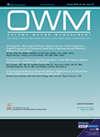医院获得性深部组织损伤的回顾性描述性分析
Q2 Nursing
引用次数: 8
摘要
预防、识别和治疗深部组织损伤(DTI)仍然是一个挑战。目的:本研究的目的是描述dti的特征和可能影响其发展和出院时结局的患者/护理变量。方法在2010年10月1日至2012年9月30日期间对电子病历进行回顾性、描述性、单站点队列研究,以确定与医院获得性dti结局相关的常见人口统计学、内在因素(如活动状况、医疗合并症和尿失禁)、外在因素(如手术和程序事件、医疗器械、床头抬高)以及护理和治疗因素;还检索了与DTI发展或样本描述性相关的其他数据点(布雷登量表评分和亚量表评分、住院时间(LOS)、重症监护病房(ICU) LOS、从入院到DTI的天数、在手术室的时间、血清白蛋白水平、支撑面/专科床和DTI位置)。采用Kruskal-Wallis、卡方检验和Fischer精确检验对DTI愈合结果进行分组,分组分为消退、部分厚度/稳定和全厚度/不可分期,并对30个主要患者/治疗变量进行分析。结果141例成人患者发生dti 179例,其中男性132例,女性47例;患者平均年龄64岁[范围19-94])。其中110例有外周血管疾病史,122例有高血压。在1年内死亡的患者中记录了69例dti。最常见的DTI部位是尾骨(47例[26%])和足跟(42例[23%]);41例(22%)与器械相关。医院平均生存时间为23天(范围4 ~ 258),ICU平均生存时间为12天(范围1 ~ 173);40例dti术前确诊,120例诊断或治疗后确诊。出院时DTI结果组的数据包括28个解决,131个部分厚度/稳定,20个全厚度/不稳定;结果组间差异显著的因素包括机械通气(15/42/12;P = 0.01),使用饲管(15/46/12;P = .02),贫血(14/30/9;P = 0.005)、脑血管意外史(7年12月27日;P = .03),医院LOS (67/18/37.5;P < 0.001), icu死亡率(23/10/12;P = .03),事件发生时间(13.5/8/9;P = .001), DTI术后血管加压药物使用情况(13/31/11;P = 0.003),低空气损耗面(10/9/3;P = .005),器械相关(14/24/4;P = .002)。结论dti的危险因素与其他脓肿相似,但发展为全层损伤并非必然。早期和频繁的评估和及时的干预可能有助于防止DTI进展。本文章由计算机程序翻译,如有差异,请以英文原文为准。
A Retrospective, Descriptive Analysis of Hospital-acquired Deep Tissue Injuries.
Preventing, identifying, and treating deep tissue injury (DTI) remains a challenge.
PURPOSE
The purpose of the current research was to describe the characteristics of DTIs and patient/care variables that may affect their development and outcomes at the time of hospital discharge.
METHODS
A retrospective, descriptive, single-site cohort study of electronic medical records was conducted between October 1, 2010, and September 30, 2012, to identify common demographic, intrinsic (eg, mobility status, medical comorbidities, and incontinence), extrinsic (ie, surgical and procedural events, medical devices, head-of-bed elevation), and care and treatment factors related to outcomes of hospital-acquired DTIs; additional data points related to DTI development or descriptive of the sample (Braden Scale scores and subscale scores, hospital length of stay [LOS], intensive care unit [ICU] LOS, days from admission to DTI, time in the operating room, serum albumin levels, support surfaces/specialty beds, and DTI locations) also were retrieved. DTI healing outcomes, grouped by resolved, partial-thickness/stable, and full-thickness/unstageable, and 30 main patient/treatment variables were analyzed using Kruskal-Wallis, chi-squared, and Fischer exact tests.
RESULTS
One hundred, seventy-nine (179) DTIs occurred in 141 adult patients (132 in men, 47 in women; mean patient age 64 [range 19-94]). Of those patients, 110 had a history of peripheral vascular disease and 122 had hypertension. Sixty-nine (69) DTIs were documented in patients who died within 1 year of occurrence. Most common DTI sites were the coccyx (47 [26%]) and heel (42 [23%]); 41 (22%) were device-related. Median hospital LOS was 23 (range 4-258) days and median ICU LOS was 12 (range 1-173) days; 40 DTIs were identified before surgery and 120 after a diagnostic or therapeutic procedure. Data for DTI outcome groups at hospital discharge included 28 resolved, 131 partial-thickness/stable, and 20 full-thickness/unstageable; factors significantly different between outcome groups included mechanical ventilation (15/42/12; P = .01), use of a feeding tube (15/46/12; P = .02), anemia (14/30/9; P = .005), history of cerebrovascular accident (12/27/7; P = .03), hospital LOS (67/18/37.5; P <.001), ICU LOS (23/10/12; P = .03), time-to-event (13.5/8/9; P = .001), vasopressor use after DTI (13/31/11; P = .003), low-air-loss surface (10/9/3; P = .005), and device-related (14/24/4; P = .002).
CONCLUSION
DTI risk factors mirrored those of other PUs, but progression to full-thickness injury was not inevitable. Early and frequent assessment and timely intervention may help prevent DTI progression.
求助全文
通过发布文献求助,成功后即可免费获取论文全文。
去求助
来源期刊

Ostomy Wound Management
医学-外科
CiteScore
0.99
自引率
0.00%
发文量
0
审稿时长
>12 weeks
期刊介绍:
Ostomy/Wound Management was founded in March of 1980 as "Ostomy Management." In 1985, this small journal dramatically expanded its content and readership by embracing the overlapping disciplines of ostomy care, wound care, incontinence care, and related skin and nutritional issues and became the premier journal of its kind. Ostomy/Wound Managements" readers include healthcare professionals from multiple disciplines. Today, our readers benefit from contemporary and comprehensive review and research papers that are practical, clinically oriented, and cutting edge. Each published article undergoes a rigorous double-blind peer review by members of both the Editorial Advisory Board and the Ad-Hoc Peer Review Panel.
 求助内容:
求助内容: 应助结果提醒方式:
应助结果提醒方式:


